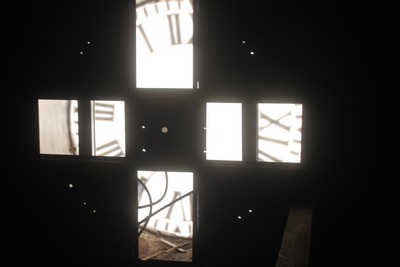
Unlike our bell, the clock was not bought for the new St. George’s building in 1849. The Daily Star wrote it was installed by William H. White, a clockmaker in town around 1838. By May 1850 the clock was placed in the tower of St. George’s.
A city/church arrangement for the clock was a marriage of convenience for a city that wanted a clock but without its own location to house it. It soon found an alternate location. In November 1852 a resolution was presented to City Council to remove the Town Clock from St George’s to the new Courthouse which had been erected in that year by architect James Renwick. It lost, though a number of St. Georgians’ were for it, including Thomas F. Knox and W. S. Barton.
Both the church and the city were involved in the clock. It was the city’s clock; they would pay the maintenance and upkeep but the Church provided the location.
One of the church sexton’s duties was to serve as the clock “tender”. At first, the city appointed a “winder” and then contracted out the maintenance work.
We have no picture of the original clock with its four faces. We know it had wooden dials and was an 8-day weight-driven clock in the English style. The bell driven by another system of weights was synchronized to chime on the hour. It was mounted on a wrought-iron, A-frame. In 1919, the city replaced these dials with glass dials and blackened numerals. The face was illuminated with electric lights as electricity was spreading throughout the city.
Photos inside the clock tower.



The last picture shows the stairs to the bell.
Also on this level is access to the attic which is above the nave:

No St. George’s tour is complete with out a look at St. George’s role in the Civil War.